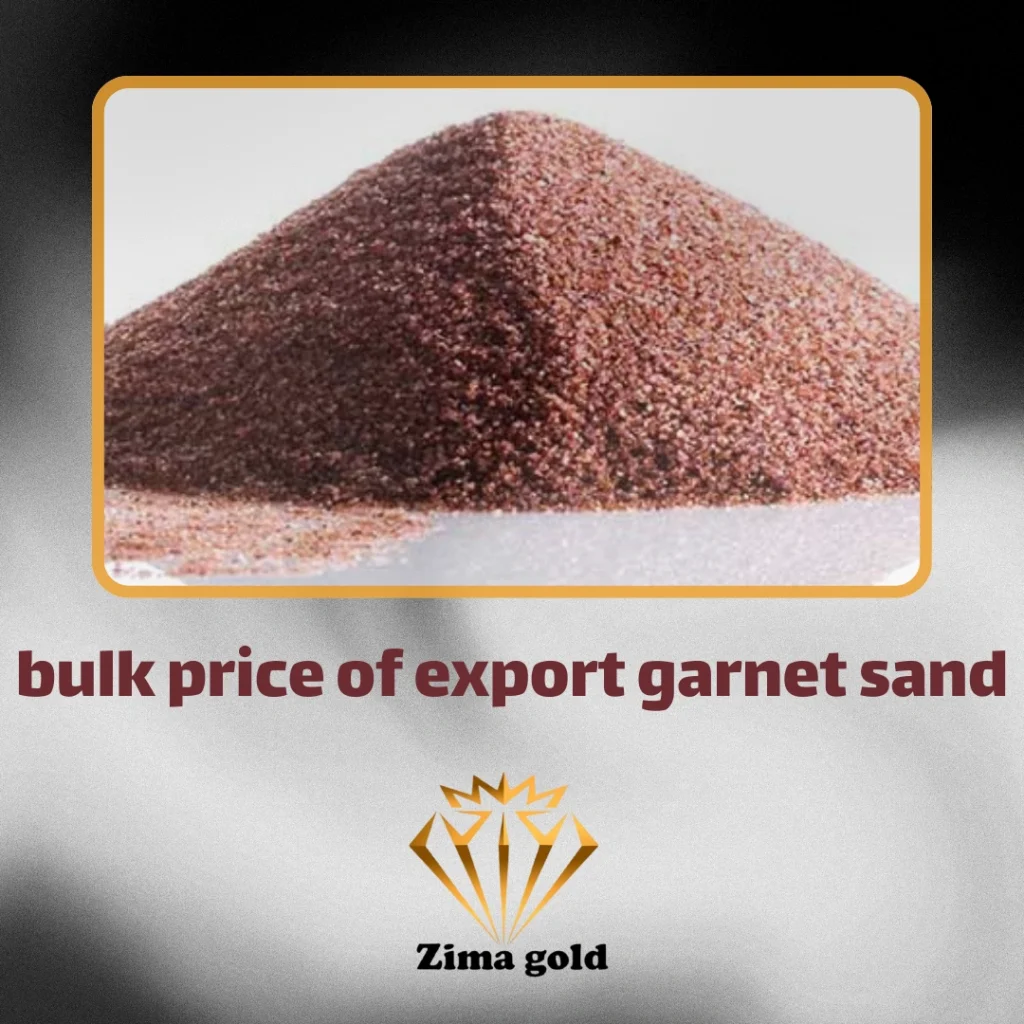Bulk Price of Export Garnet Sand
Garnet sand (Garnet Abrasive), with its high hardness, suitable density, and excellent chemical resistance, holds a special place in various industries. In the global market, Iranian garnet competes with products from India and Australia in terms of quality, thanks to its high purity and diverse grading. However, determining the bulk price of export garnet sand depends on multiple technical, economic, and logistical factors beyond just quality.
Technical Nature of Export Garnet Sand
Garnet is a type of iron or manganese aluminum silicate naturally found in metamorphic or igneous rocks. The technical properties that make it valuable for export include:
-
Mohs hardness: 7.5 to 8 (ideal for cutting and abrasion)
-
Bulk density: 4.0 to 4.2 g/cm³
-
Crystal fracture pattern: Sharp edges after crushing (enhancing sandblasting performance)
-
Reusability: 4 to 7 cycles in sandblasting, depending on pressure and surface type
Specialized Processing and Grading
After mining, raw garnet requires processing steps that directly impact its export price:
-
Washing and magnetic separation to remove impurities
-
Industrial drying to prevent particle clumping
-
Precise screening and grading (Mesh Sizes):
-
20–40 mesh: Ideal for heavy steel surface rust removal
-
30–60 mesh: Most common size for general sandblasting
-
80 mesh and above: Suitable for high-precision waterjet cutting
-
Technical Factors Affecting Bulk Export Garnet Price
1. Mineral Purity
A higher percentage of aluminum silicate and lower quartz content lead to better performance and reduced consumption per square meter, giving a competitive edge in export markets.
2. Type of Deposit (Alluvial vs. Hard Rock)
-
Alluvial Garnet: Mined from river deposits, more rounded grains, ideal for waterjet cutting
-
Hard Rock Garnet: Extracted from metamorphic rock, sharper edges, better for sandblasting
3. Target Market Requirements
Countries such as UAE, Oman, Turkey, and Qatar often demand 30–60 mesh sizes, while European waterjet markets focus on 80 mesh.
4. Export Standards
Export-grade garnet must come with MSDS, chemical and physical analysis reports, and hardness tests. Meeting these standards increases production costs.
5. Logistics and Pricing Terms (FOB vs. CIF)
-
FOB (Free On Board): Price includes delivery to the loading port
-
CIF (Cost, Insurance, Freight): Includes shipping and insurance to the destination
These terms significantly affect the final selling price.
Current Bulk Price of Export Garnet Sand
In 2025, considering currency rates, mining costs, and maritime shipping expenses, the bulk export price of Iranian garnet for orders above 500 tons ranges from $340 to $540 per ton (FOB Bandar Abbas). For CIF pricing, the rate varies based on destination and shipment volume.
Direct Purchase from the Producer
Buying directly from the manufacturer not only reduces costs but also ensures quality and supply consistency. Zima Gold is a reliable supplier of export-grade garnet sand, offering both sandblasting and waterjet varieties directly from mines in southern Iran, packaged in one-ton jumbo bags for international markets.
FAQ
1. Why is Iranian garnet competitive in the global market?
Due to its high hardness, suitable purity, and more affordable price compared to Indian and Australian products.
2. How many times can export-grade garnet be reused?
Depending on working pressure and surface type, it can be recycled 4 to 7 times.
3. Does particle size affect the price?
Yes. Specific sizes such as 80 mesh for waterjet cutting are generally more expensive due to the precision processing required.
Conclusion
The bulk price of export garnet sand is influenced by a combination of mineral composition, industrial processing, export standards, and logistics. Choosing a supplier like Zima Gold ensures consistent quality, stable supply, and competitive pricing in the global market.

